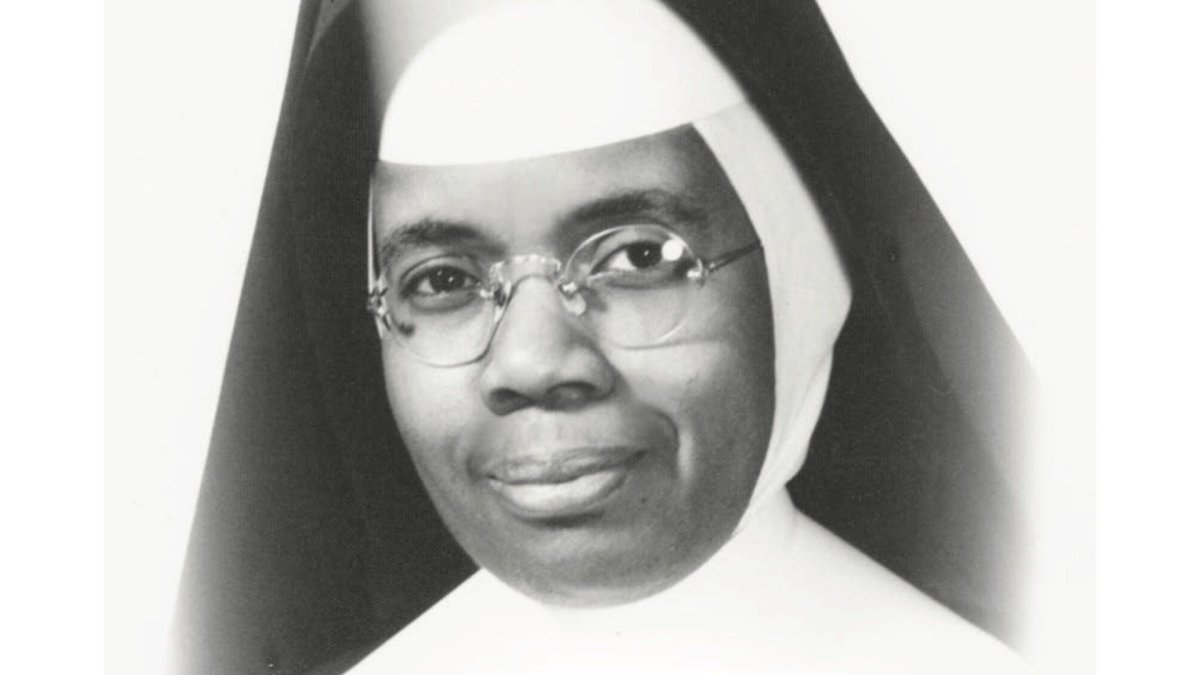Sister Wilhelmina Lancaster died four years ago, but when her body was exhumed this month at the monastery she founded in Missouri, leaders were shocked to find her remains still seemingly intact.

Since the May 18 exhumation, word of the nun’s reportedly undecayed body has spread like wildfire. Thousands of people have journeyed to the Benedictines of Mary, Queen of the Apostles Monastery in Gower, Mo., on a religious pilgrimage, or simply to catch a curious glimpse of the nun’s body.
On Sunday, the monastery saw an average of 200 vehicles arrive at the abbey’s property every hour, according to Clinton County Sheriff Larry Fish. In a Facebook video, Fish said the monastery expected 15,000 visitors by the end of the day.
Many visitors prayed over Lancaster’s remains, which are on display. Several people touched the body with their hands or rosary beads, while other Catholic followers kissed the nun’s hands.
Lancaster was never embalmed and was buried in a cracked wooden coffin. Though there was apparently “a mask of thick mold” on the remains due to the high levels of condensation within the cracked coffin, both Lancaster and the habit she wore were “incorrupt,” the Catholic News Agency reported.
In Catholicism, “incorrupt” remains — or rather, a body that has not decomposed — is perceived as a sign of holiness and can be an indicator for potential sainthood.
The monastery has declared Lancaster the first African American woman to be found incorrupt in the U.S.
Bishop Johnston of the Diocese of Kansas City-St Joseph said in a statement that Lancaster is not yet being considered for sainthood. He claimed a “thorough investigation” into Lancaster’s remains is currently underway.
The Catholic News Agency reported that more than 100 bodies have been found incorrupt and subsequently canonized by the Church.
Despite the outlet’s claims that the condition of Lancaster’s body has baffled morticians, some experts have already said the lack of decay is not uncommon.
“In general, when we bury a body at our human decomposition facility, we expect it will take roughly five years for the body to become skeletonized,” Nicholas Passalacqua, a forensic anthropologist, told Newsweek. “That is without a coffin or any other container or wrapping surrounding the remains. So for this body, which was buried in a coffin, I personally don’t find it too surprising that the remains are well preserved after only four years.”
Even so, religious followers from all over the U.S. continue to flock to the Benedictines of Mary, Queen of the Apostles Monastery to pray over Lancaster’s remains.
The nun’s body will be on display until May 29. After a rosary procession, the remains will be encased in glass near the altar of St. Joseph in the chapel in order to “welcome her growing number of devotees,” according to the monastery’s website.








Comments